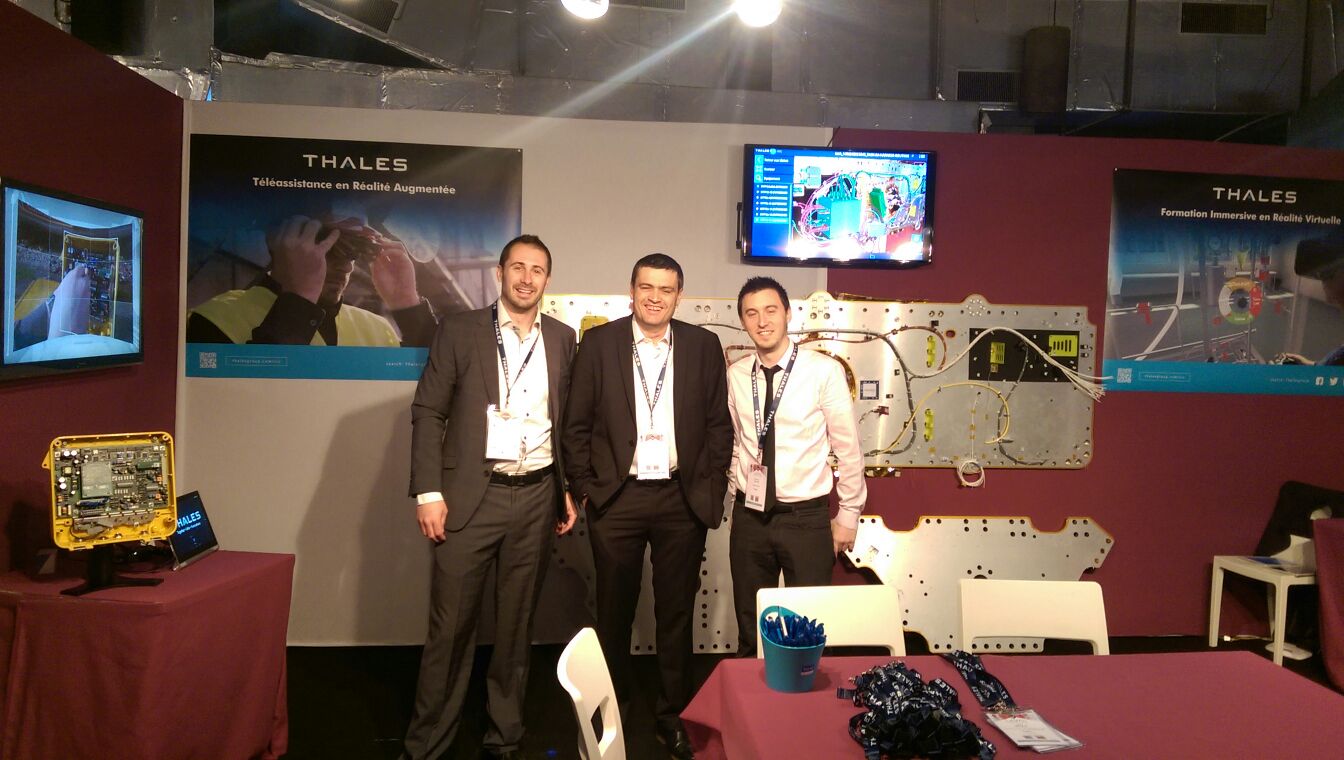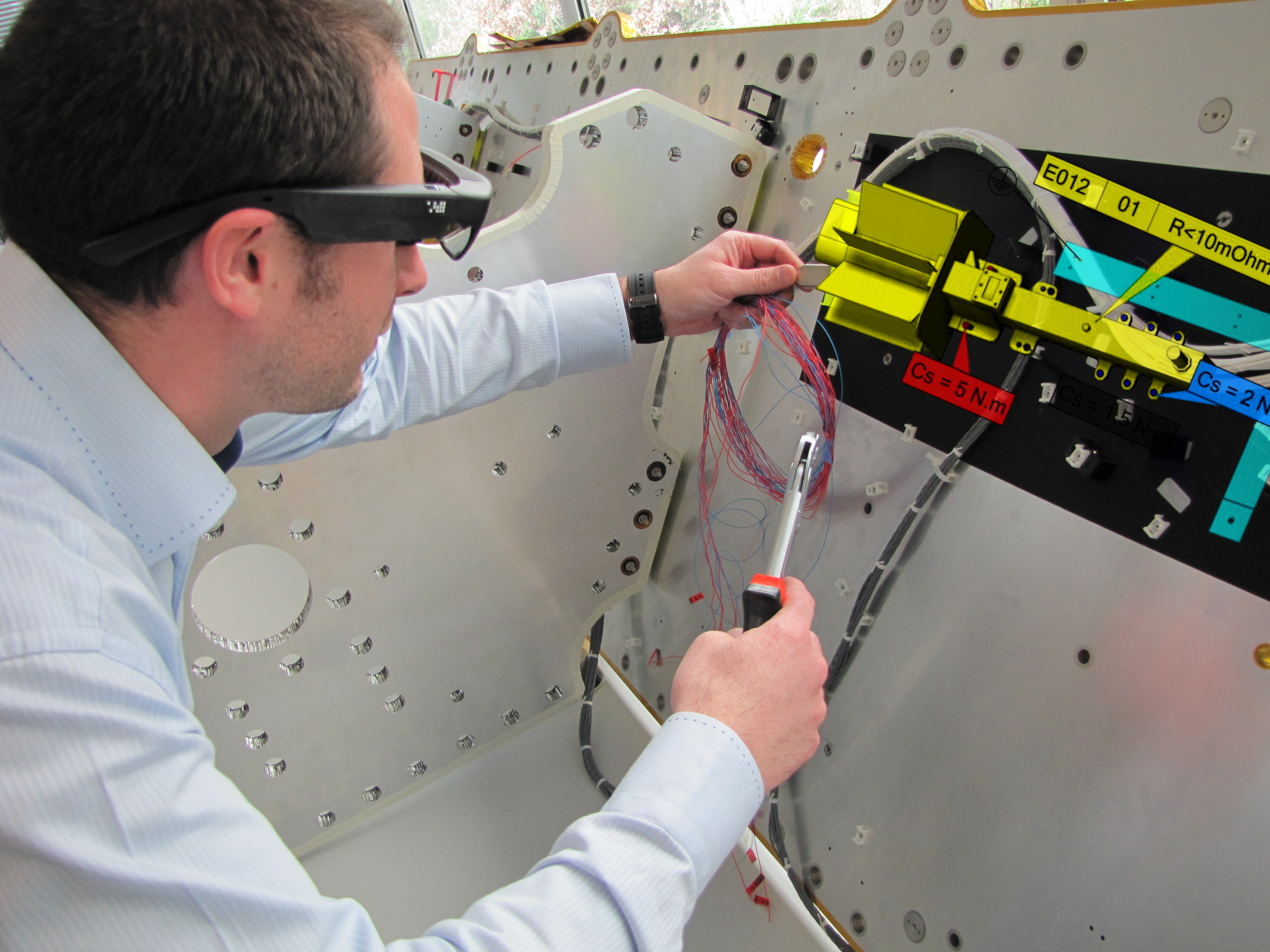AR/VR ready for the real world
Spring has been a busy time of year for Thales's augmented reality (AR) and virtual reality (VR) teams, who took part for the very first time in Laval Virtual in March and the Internet of Things Showroom (SIdO) in April.
We spoke to project manager,Philippe, to learn more about the practical applications of these technologies and find out how visitors reacted to our first official appearance at these flagship events.

How did Thales get involved in these innovative technologies?
AR technologies are less than three years old, so it's a completely new market, unlike VR and serious games, which have been developing steadily for over a decade. In both cases, we always ask ourselves the same questions: how can we differentiate ourselves from the other players in these markets, and what competitive advantage can we offer?
The market for video games is very diverse, and we know it's important not to spread ourselves too thinly on the ground. We need to focus on the specific competencies required to develop core building bricks for a whole range of applications. Thales has chosen to concentrate on 3D tools, because they’re the most flexible and once the code is developed it can be tailored to any platform.
How advanced are these products? Are they fully developed or are they still prototypes?
Last year was a pivotal year in our market. The technologies have been tested in real-world conditions and the hardware is now powerful enough to support the software, so what were once prototypes are now ready to be turned into products. Our deliverables are assembled to order to meet the needs of each customer, so we can offer a fast response, putting together the pieces as and when they're required using the same cross-platform development engine (usually Unity).
“1.3 billion mobile AR apps could be in use by 2019 ”
What are the practical applications of these technologies?
Virtual reality and augmented reality are used for different types of applications:
- Augmented reality for remote assistance, or real-time access to remote experts. All sectors stand to benefit from these applications, from manufacturing to maintenance & repair, but in practice they’re only likely to be used for more complex tasks.
- Augmented reality for industrial assembly, particularly when operations are complex or involve precision tasks, such as in the IT and aerospace sectors, which are our top priorities.
- Augmented reality for maintenance, since all machinery today requires lengthy checking procedures. Tasks are recorded by the operator's glasses, so supervisors can ensure that nothing is forgotten or overlooked. The technology is useful in a whole host of situations, particularly in industry.
- Virtual reality for serious games. This new kind of computer-based simulation is an effective way to transfer skills and train users in real-world conditions. These techniques also have a role to play in risk prevention, for example to make sure everybody knows where to go if a fire breaks out in a building.
We’re positioned in three main areas: augmented reality for remote assistance, augmented reality for task supervision, and immersive simulation.
What’s next for virtual and augmented reality? How are these technologies likely to develop?
In virtual reality, simulations will become more immersive and find applications in new areas. Gesture control and force feedback are two avenues of development where we can learn a lot from the world of video games and then decide which aspects we can incorporate into our own technologies.
Augmented reality is the market where the hardware will improve the most in 2016, meaning it will be able to support increasingly powerful software. This new generation of tools will expand the choice of technologies that can be used.
In 2017 and 2018, the field of view offered by AR headsets will double from 24 to 50 degrees. This will mean fewer head movements and make the hardware easier to use.

You recently took part in the Laval Virtual and SIdO exhibitions in France. What are your first impressions?
It was the first time we had taken part and we had a lot of positive feedback. Members of the public were interested to learn that Thales is getting involved in these technologies, and there was a lot of enthusiasm from professionals who are really starting to recognise how these innovations can benefit their businesses and their markets.
In the last few years, industries have been stepping up their R&D in these areas. Now they are looking at practical applications and will be increasingly asking people like us to build demonstrators so they can see how applications work in their own settings. Augmented reality will be a hot topic in a whole range of industries in 2016!
The people we met at Laval Virtual and SIdO liked our focus on industrial applications. They were particularly interested to see how solutions such as Thales Eye can be used right now to develop practical applications quickly. We had installed part of a real satellite on the stand which reinforced our message about practical industrial applications being within reach today. Our new 360° video also helped to show how excited we are about the future of AR and VR!